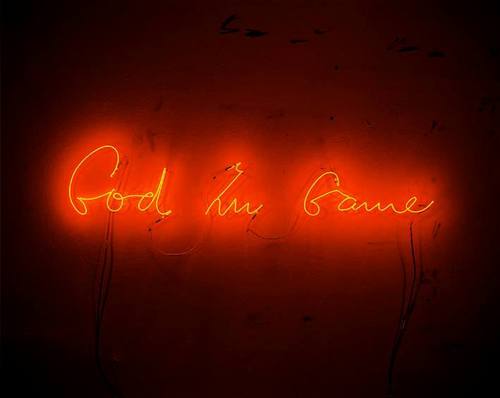Stephan Jung
dal 23/2/2006 al 14/4/2006
Segnalato da
23/2/2006
Stephan Jung
Galerie Reinhard Hauff, Stuttgart
God in Game. "The works of Stephan Jung move in and out of abstraction and realism, as mediators "between the Here of true reality and the Beyond of computerbased reality" (Claudia Seidel). In the large format painting "God in Game" Jung tackles the fixation of an avatar (his alter ego) in the medium of painting.

God in Game
Galerie Reinhard Hauff is pleased to announce its first one-man show by the
Stuttgart born painter Stephan Jung (*1964), who lives and works in Berlin.
Stephan Jung is represented in important collections such as that of the
Staatsgalerie Stuttgart, and last fall he had a solo show titled "Host" in
the Galerie der Stadt Backnang. The pictorial universes invented by New
Media have substantially widened our capacity for new esthetic experiences.
In that new territory, the works of Stephan Jung move in and out of
abstraction and realism, as mediators "between the Here of true reality and
the Beyond of computerbased reality" (Claudia Seidel).
In the large format painting "God in Game" - the central work of the Galerie
Reinhard Hauff show Stephan Jung tackles the fixation of an avatar (his
alter ego) in the medium of painting. Avatar means a kind of virtual
stand-in for a person in cyberspace, an artificial look-alike of a member or
a player in chat forumŒs or computergames. The concept of avatar derives
from "avatara" which in Indian religion means the descent or incarnation of
a God on earth. It is in this virtual world of cybergames and equipped with
all the functions needed to empower him to succeed in a fantasy adventure
that "God in Game" in the silvery, shimmering animation of the artist enters
into the realms of our world. But in a (painted) image of something real,
what is really real? A picture of a pipe is not a pipe but a picture.
Despite its mask-like intransigence it is clearly the facial features of the
artist you see in the avatars face, projected so closely onto the black
background that it almost fills up the entrie 6 x "meter surface. In the
metalically cool topographie of the face you discover the distorted
reflections of the artist Berlin apartment. Various red and yellow colour
reflections can, however, only with difficulty be attributed to any concrete
object.
Breaking with the traditionally vertical format of a classical
portrait, the artist chooses a horizontal format for this selfportrait,
which makes for an additional notion of distance between the picture and the
observer. Stephan Jung demonstrates once more that precisely the classical
medium of painting - thanks to its inherent possibility to create illusion -
is exceptionally suited for adapting to the never ending challenges of
playing with different and multiple levels of reality.
Galerie Reinhard Hauff
Paulinenstr. 47 - Stuttgart



